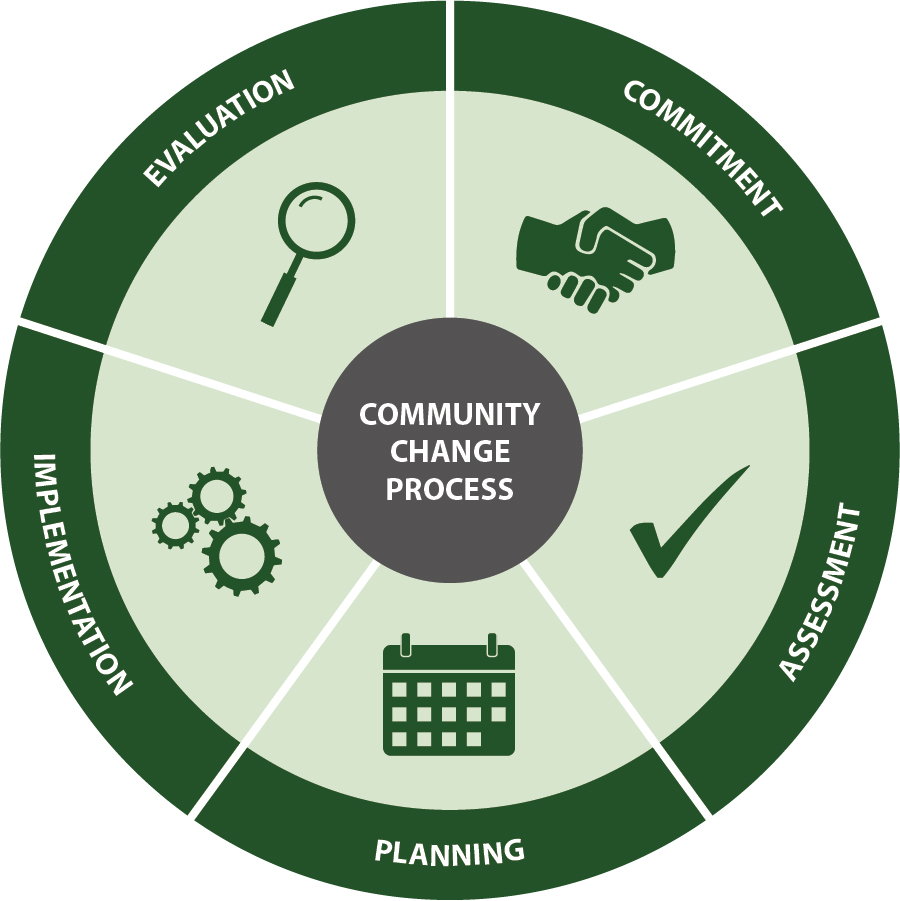Community Change Process and the CHANGE Tool
Every community is different, but there are similarities in the process by which communities mobilize to affect change. The five phases of this process are depicted below.
- Commitment
- Assessment
- Planning
- Implementation
- Evaluation
Why is this process important to consider when completing the CHANGE tool? The process to complete the CHANGE tool mirrors these five phases. Consider that, while there are five phases to the community change process, this web site focuses specifically on the first three – Commitment, Assessment, and Planning, as they frame the step-by-step process for completing the CHANGE tool.

- Commitment involves assembling a team — or coalition — of community members to address key issues and establish partnerships with other agencies. Coalitions and partnerships give participants ownership of the process and a ready pool of fiscal and human resources to support policy, systems, and environmental change strategies.
- Assessment involves gathering data and input on what the community needs. Assessment also provides a way for the community’s voice to be heard. Change strategies must reflect the needs of the community to have the intended impact. As Chang has noted (1994), “a community assessment process is not just a matter of surveying what people need, but it is a community organizing strategy. By rigorously and creatively assessing community needs, the process gives real ‘voice’ to individuals in the community…voices that can significantly influence program design.”
- Planning is the natural progression from assessing community needs. Now that the information is available, your team takes action to develop the Community Action Plan for change.
- Implementation is executing the plan you have developed, in collaboration with the community team, stakeholders, and partners. Implementation requires maintenance of the commitment and ownership established in the beginning; without this support the plan can fall apart.
- Evaluation is woven throughout the community change process and provides the basis for answering key questions: Are you implementing the right strategies? Are you creating the measurable impact envisioned? Evaluation, whether formal or informal, gathers lessons from what you are doing and provides recommendations for what can be done in the future. Evaluation also helps to inform key decision makers. Evaluation is listed as the final component of this cyclical process, but it should be considered from the beginning and included throughout all phases.
